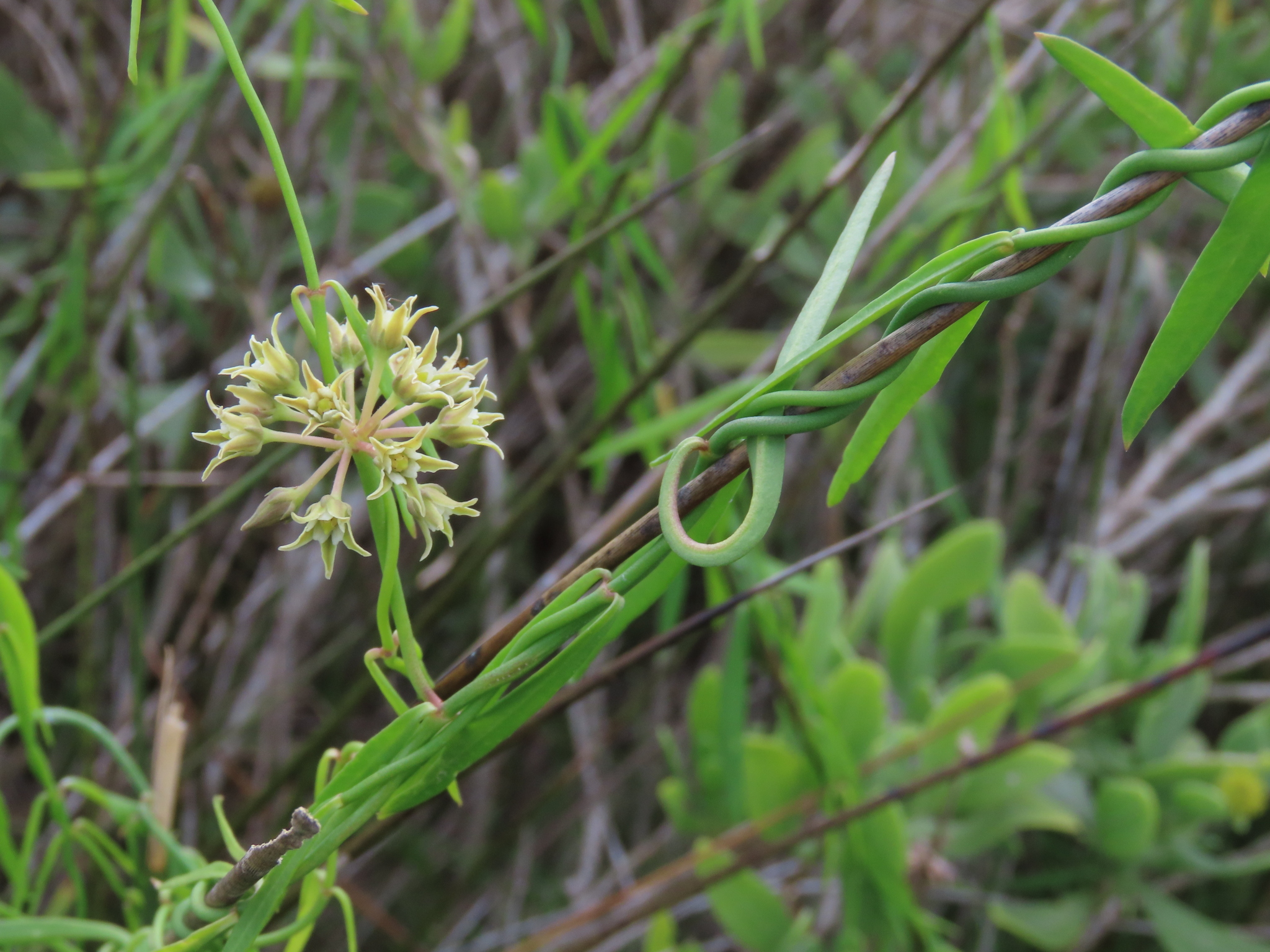
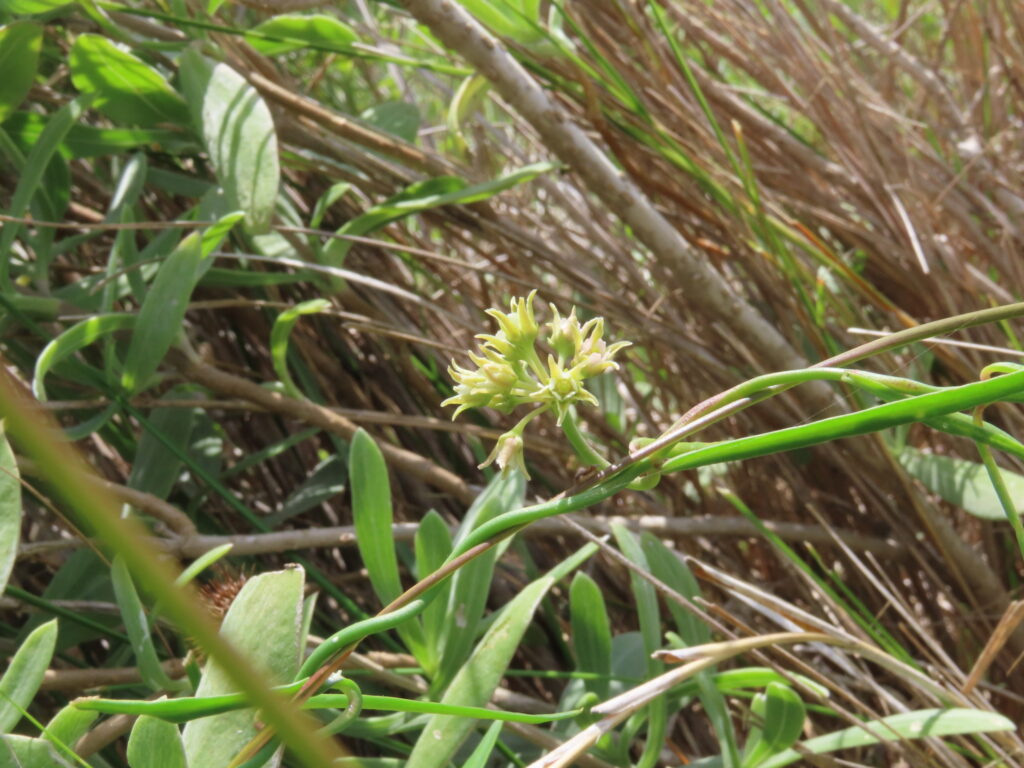
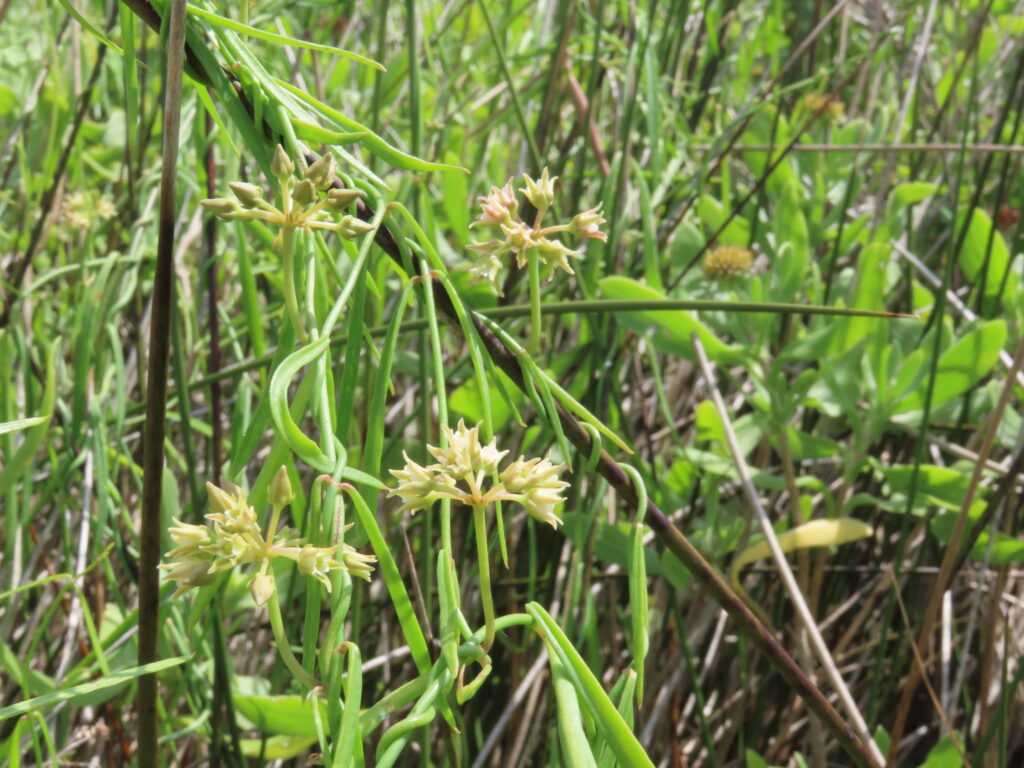
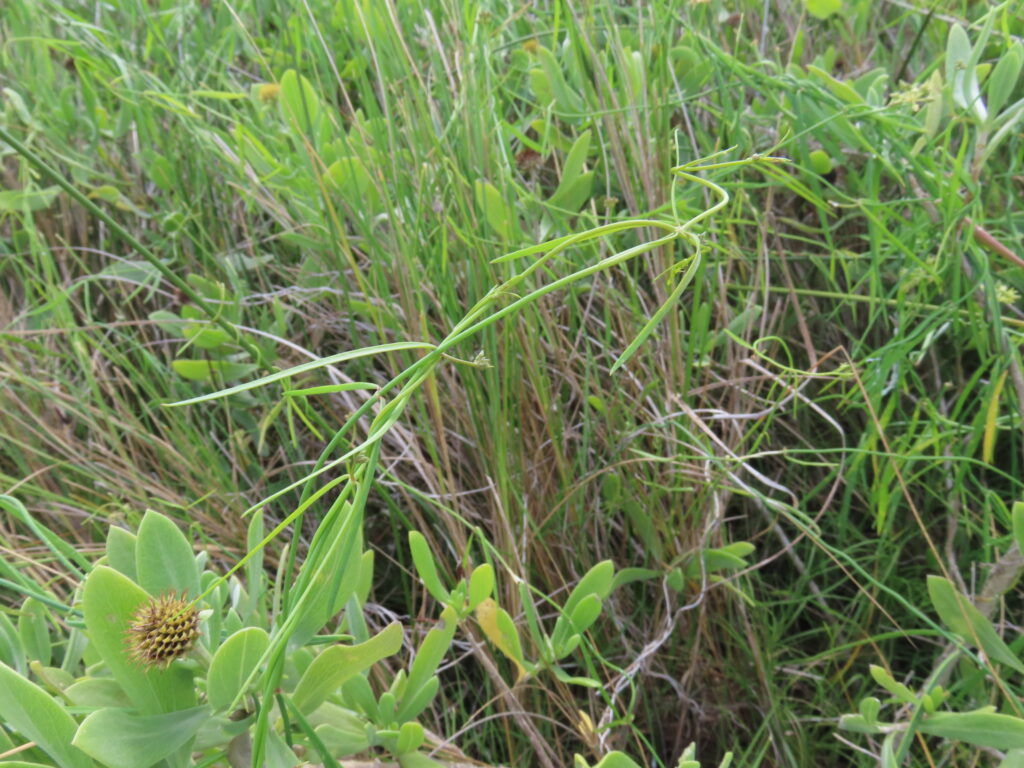
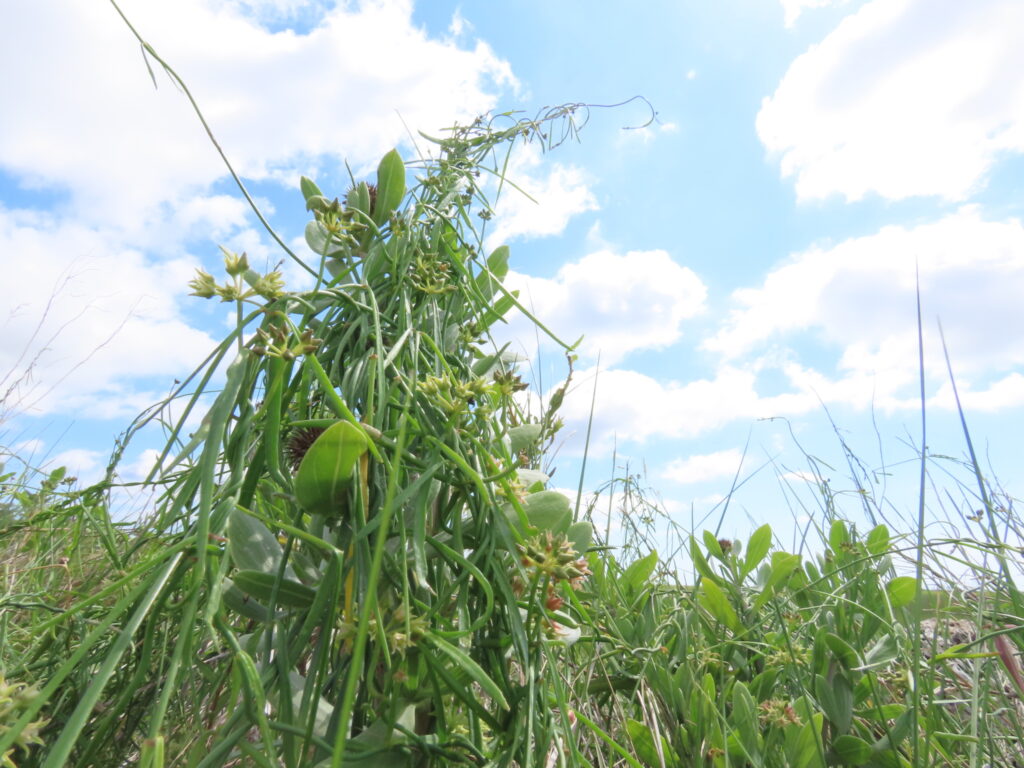
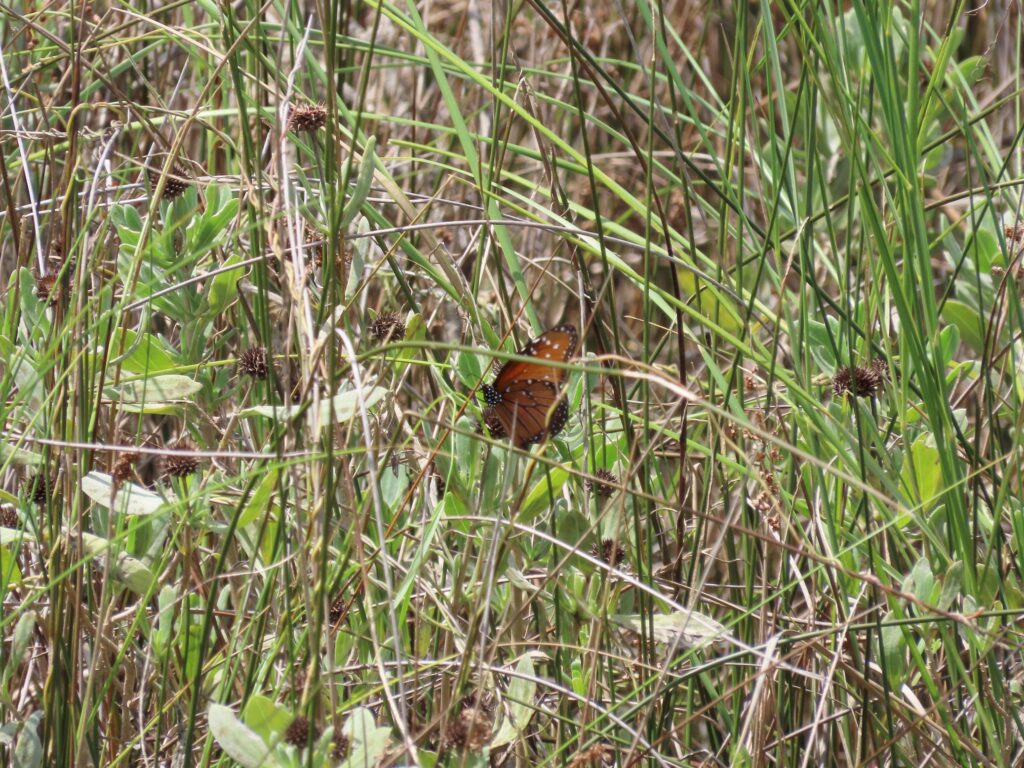
This week for Flora and Fauna Friday we have a salty twining vine with an underappreciated role in coastal Monarch conservation, Gulf Coast Swallowwort (Pattalias paluster).
Twining ‘round the Fimbry and tangled between the gnarled boughs of the Redcedar lies an unsuspecting vine. Gulf Coast Swallowwort is an herbaceous, perennial vine found along the extreme coast of the southeastern United States. It’s emerald-green foliage, thread-thin stem, and needle-like leaves allow it to blend in, almost undetectable, amidst the grasses, sedges, and rushes it grows overtop of. It’s found most commonly in maritime forests on barrier islands and the fringes of saltmarshes along our Sea Islands, including as Edisto Island. It prefers moist soils, full sun, and is fairly salt tolerant. As such, it can often be found along the banks of causeways, margins of feeder creeks, hammock islands, and just upland from sand flats. Swallowwort blooms throughout summer. Flowers are borne in spherical clusters with each flower being a five-point bell-like shape draped in a shade of pastel-green, accented inside with white and sometimes washed above with pastel-pink. The fruit of Swallowwort is a dry, spindle-shaped pod filled to the brim with cottony, wind-blown seeds.
What makes Gulf Coast Swallowwort important for coastal Monarch conservation is that it’s a member of the Milkweed family, Apocynaceae, and a host species that is able to support the Monarch’s larvae. It can also host the Queen, a tropical relative of the Monarch that makes its way to Edisto most years. Not only that, it’s one of very few native Milkweed species that can still be found growing wild and abundant along the extreme coast. Further inland, there are still many great protected lands which support a wide diversity of native Milkweeds. However, here on the Sea Islands, many of those species can’t survive in salt intruded soils and those that once grew on the uplands have long since been pushed to near eradication by prolonged past agricultural use. This leaves Swallowwort as the sole native Milkweed on all of our barrier Islands and much of the Sea Islands. Although the Lowcountry’s resident population of non-migratory Monarchs is not yet well understood, I can’t imagine Swallowwort doesn’t help bind our Sea Islands back to the mainland and create a bridge for this imperiled butterfly species to recolonize the coast.